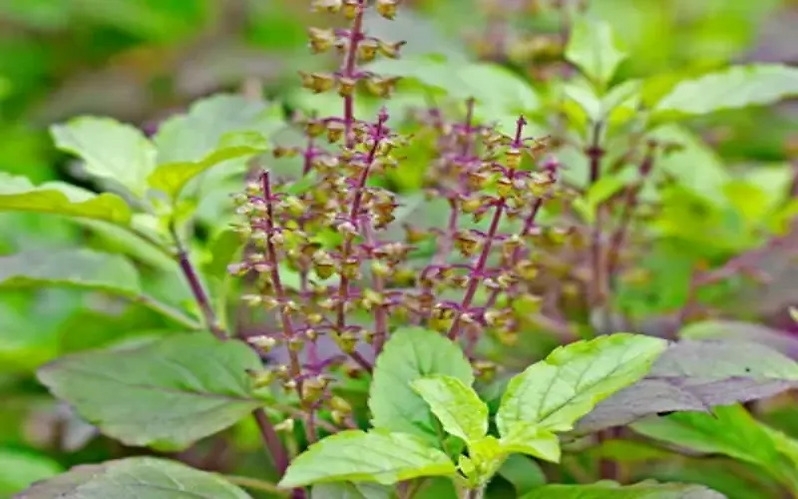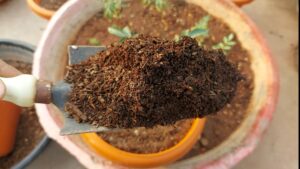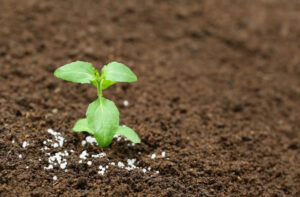Complete Guidance to Grow Tulsi(Basil) Plant in Your Garden

Nursery Today Desk
New Delhi. Most homes have a basil plant that is rich of medical benefits. Tulsi or basil is a special herbal remedy. The botanical name for tulsi is Ocimum sanctum. Hinduism and Jainism both hold high regard for the tulsi plant. Because of its numerous health advantages, tulsi is frequently referred to as the “elixir of life.” Tulsi is utilized in both medications and cosmetics due to its abundance of therapeutic benefits.
Whether you cultivate plants inside your home or outside in the garden, all plants require care to ensure healthy growth and protection from pests. It is essential to properly monitor the plants in addition to watering and feeding them. Plants only grow when properly maintained and cared for, regardless of the variety. Basil, which is well-known for its therapeutic benefits, is a plant that requires attention to prevent long-term drying out and promote healthier growth.
How to plant basil
Basil is a perennial herb that grows quickly. It can be grown from seed or cuttings in both indoor and outdoor gardens For best growing basil plants, sow seeds in early summer when soil temperatures are around 60 to 70 ºF (15 to 21 ºC).
Spread the seeds of basil over the ground and cover them with a layer of soil that is 1/4 inch (6 mm) deep to grow basil in a pot or garden. Place the seeds in a sunny area after lightly misting them with a sprayer pump. Till the seeds sprout, keep the soil continually moist. It will take one to two weeks for basil seeds to sprout. When the plants have two or three leaves, carefully transplant each one into a different container, without disturbing the roots.
In addition to planting seeds, you can also use Tulsi plant cuttings to grow the plant. Cut a stem or stalk from a fully established basil plant that is 4 to 6 inches long. Put the basil cuttings in a clear glass container that has water in it. Change the water every day to prevent stem rot from bacterial infestation. Place this glass container in a warm, sunny location. Cuttings of basil start to form roots in 7 to 10 days. As soon as the basil’s roots have grown, you can transplant it to potting soil.
Right Conditions for the growth of Tulsi
Temperature – The ideal temperature for Tulsi plant to grow well is above 10 degree Celsius.
Sunlight – Tulsi plant requires at least 6 hours of sunlight daily to grow well. Tulsi plant can survive even in the presence of partial sunlight.
Soil – Potting soil with proper drainage is ideal for growing basil plants indoors. Potting mix can be prepared by adding sand to the soil to prepare the soil with proper drainage.
Soil pH – The ideal soil pH for growing basil should be 6.0 to 7.5.
How to nurture Tulsi
It is very important to take proper care of the potted basil plant at home. With the right care, tulsi doesn’t dry out, grows well, expands swiftly, and has dense leaves. Please tell us how to care for Tulsi.
Watering the plant

It is vital to sometimes water the basil plant if you want it to stay green for a long period. But keep in mind that Tulsi shouldn’t receive any extra water. When the soil dries out after one irrigation, reapply water. Little amount of water should be given during monsoon. The soil should drain well if the Tulsi plant is routinely watered during worship. Remember that the basil plant will be harmed if watered too much.
Prevent basil from over-wintering
Keep basil indoors throughout the winter or put the plant close to a window that gets enough of sunlight and is warm enough to stand. Wintertime placement of the plant outside in the sun is safe once the threat of frost has passed. The leaves of Tulsi begin to decay or rot as the temperature drops in the winter. Therefore, it is recommended to keep the basil plant in a warm location and between some other plants in order to protect it from the cold.
Insecticides for Basil
Tulsi is generally free from pests and diseases. However, when grown under poor conditions, some common pests such as mealybugs, aphids, spider mites and occasionally whiteflies can attack. Use organic insecticides like neem oil or insecticidal soap to protect basil from pests.
Fertilizers for Tulsi

Basil needs fertile soil to thrive and to keep the leaves green enough. Apply a balanced liquid fertilizer once every four weeks but taper off after the growing season. It is beneficial to apply two inches thick compost on the top layer of soil every year or six months. You can use tea leaf compost and well rotten cow dung manure and organic fertilizer Epsom salt as fertilizer for Tulsi plant.
Plant pruning for the growth of basil
Home-grown basil should be pruned as needed throughout the year to control its size, promoting bushier and more compact growth. Do not cut more than half the stem when pruning. You can harvest the tops of the basil plant.
Repotting Basil Plant
Growing basil plant from cuttings can be difficult. You can transplant the Tulsi plant from one pot to another and grow it again. When removing the plant from the previous pot, take care of the roots, otherwise the plant will not grow at all.
Faster growth of the plant

Basil plant grows rapidly in loamy and fertile soil with good drainage. You can plant it in acidic, neutral and alkaline soil. The pH of the soil should be around 6 to 7.5. Basil thrives in the sun, but also grows easily in light shade. Basil grows rapidly by adding nutrients to the soil through liquid organic fertilizer. Apart from this, regular pruning should be done to encourage the growth of Tulsi plant.
Benefits of Tulsi
Tulsi is used as a medicinal herb. It has antioxidant, antibacterial, antiviral, ant carcinogenic, immune-stimulating and adaptive properties. It removes germs, stress and various kinds of problems.


